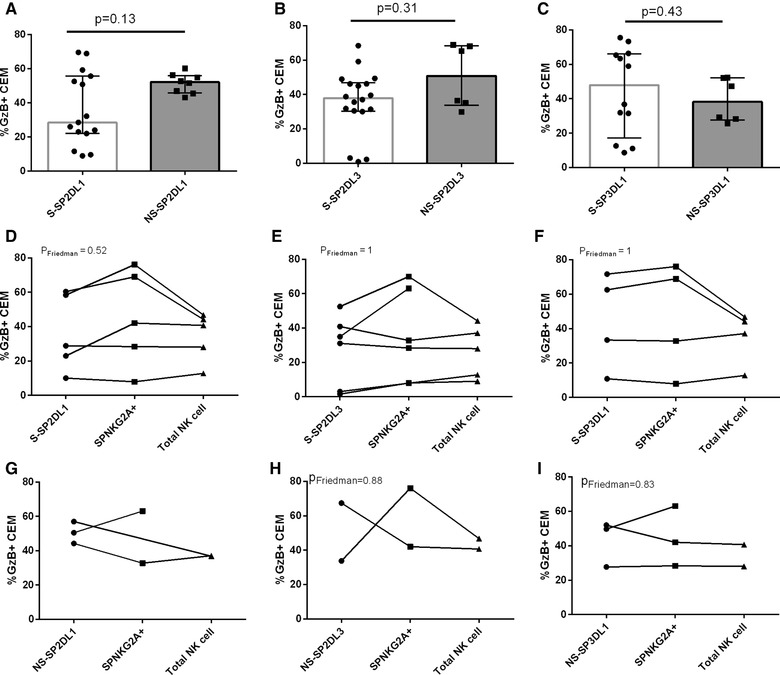Figure 2.

The influence of NK cell education status of NK populations single positive for inhibitory NK receptors (SPiNKRs) on the frequency of granzyme B positive (%GzB+) target cells generated in ADCC‐GTL assays. Panels A‐C show the %GzB+ CEM cells on the y‐axis generated in an ADCC‐GTL assay using SPiNKR to self‐HLA (i.e., educated) and nonself‐HLA (uneducated) as effector cells. SPiNKR effectors cells were KIR2DL1+ (2DL1) (A), KIR2DL3+ (2DL3) (B) and KIR3DL1+ (3DL1) (C). Bar heights and error bars represent the median and interquartile range %GzB+ CEMs for each data set. In panels D‐I, the y‐axis shows the %GzB+ CEM cells generated in an ADCC‐GTL assay using effector cells that were self‐SPiNKR+ (D‐F) or nonself‐SPiNKR (G‐I) compared to SPNKG2A+ cells and total NK cells from the same individual tested at the same effector to target cell ratios. SPiNKR effector cells were 2DL1+ (D, G), 2DL3+ (E, H) and 3DL1+ (F, I). Paired analyses (Friedman tests) compared within‐individual values for the %GzB+ CEM cells
